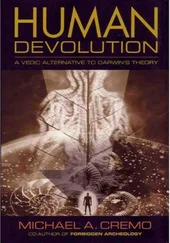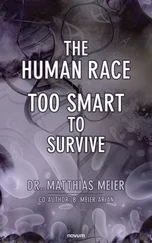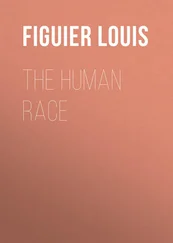Michael Cremo - Forbidden Archeology - The Hidden History of the Human Race
Здесь есть возможность читать онлайн «Michael Cremo - Forbidden Archeology - The Hidden History of the Human Race» весь текст электронной книги совершенно бесплатно (целиком полную версию без сокращений). В некоторых случаях можно слушать аудио, скачать через торрент в формате fb2 и присутствует краткое содержание. Год выпуска: 1992, ISBN: 1992, Издательство: Torchlight Publishing, Жанр: Старинная литература, на английском языке. Описание произведения, (предисловие) а так же отзывы посетителей доступны на портале библиотеки ЛибКат.
- Название:Forbidden Archeology: The Hidden History of the Human Race
- Автор:
- Издательство:Torchlight Publishing
- Жанр:
- Год:1992
- ISBN:9780892132942
- Рейтинг книги:4 / 5. Голосов: 1
-
Избранное:Добавить в избранное
- Отзывы:
-
Ваша оценка:
- 80
- 1
- 2
- 3
- 4
- 5
Forbidden Archeology: The Hidden History of the Human Race: краткое содержание, описание и аннотация
Предлагаем к чтению аннотацию, описание, краткое содержание или предисловие (зависит от того, что написал сам автор книги «Forbidden Archeology: The Hidden History of the Human Race»). Если вы не нашли необходимую информацию о книге — напишите в комментариях, мы постараемся отыскать её.
Forbidden Archeology: The Hidden History of the Human Race — читать онлайн бесплатно полную книгу (весь текст) целиком
Ниже представлен текст книги, разбитый по страницам. Система сохранения места последней прочитанной страницы, позволяет с удобством читать онлайн бесплатно книгу «Forbidden Archeology: The Hidden History of the Human Race», без необходимости каждый раз заново искать на чём Вы остановились. Поставьте закладку, и сможете в любой момент перейти на страницу, на которой закончили чтение.
Интервал:
Закладка:
The answer to this objection is that the various elements in our fixed reference frame may well be in need of reevaluation. However, in this study it would be impractical to delve into these matters in sufficient detail to demonstrate the specific defects that may exist in this geological and paleontological framework. Given the total body of available paleoanthropological evidence, we can only conclude that something must be seriously wrong with our current scientific picture of human evolution.
The point could be made that even if human beings existed in much earlier periods than is currently believed possible, this still does not contradict the theory of evolution. The evolution of humans could simply have taken place at earlier times. Our answer is that the material we are presenting can be interpreted in that way, and indeed it was so interpreted by most of the scientists who originally presented it. In fact, no matter what evidence is presented for the existence of human beings at a particular date, it is always possible to suppose that they evolved from lower forms at an earlier time.
It can also be said, however, that if the empirical basis for the current view of human evolution proves faulty, then the credibility of evolutionary theory in general is brought into question. After all, if the imposing empirical edifice of evolution from Australopithecus to Homo sapiens is just a house of cards, then how quick should one be to accept another elaborate evolutionary scheme?
1.10 Theories and Anomalous Evidence
We have spoken of “anomalous evidence” and “evidence accepted in support of modern theory.” in general, a piece of evidence is anomalous only in relation to a particular theory. If one could look at the world without any theoretical presuppositions (conscious or unconscious), one would see nothing anomalous. Unfortunately, one would probably experience little but a welter of meaningless sense perceptions, since it is through theoretical understanding that we give meaning to what we perceive.
In this connection a famous remark by Einstein is worth considering: “it may be heuristically useful to keep in mind what one has observed. But on principle it is quite wrong to try grounding a theory on observable quantities alone. In reality the opposite happens. It is the theory which determines what we can observe” (Brush 1974, p. 1167).
If Einstein is right, then as theories change, observations should also change. And this is indeed what we find in paleoanthropology. As we shall see, large amounts of paleoanthropological evidence were amassed in the late nineteenth and early twentieth centuries in support of a theory that humans or near humans were living in the Pliocene, Miocene, or earlier periods. This evidence was not regarded as anomalous by the scientists who introduced it, since they were contemplating theories of human origins (mainly along the lines of Darwinian evolution) that were compatible with this evidence. Then, with the development of the modern theory that humans like ourselves evolved in the Pleistocene, this evidence became highly unacceptable, and it vanished from sight.
One prominent feature in the treatment of anomalous evidence is what we could call the double standard. All paleoanthropological evidence tends to be complex and uncertain. Practically any evidence in this field can be challenged, for if nothing else, one can always raise charges of fraud. What happens in practice is that evidence agreeing with a prevailing theory tends to be treated very leniently. Even if it has grave defects, these tend to be overlooked. In contrast, evidence that goes against an accepted theory tends to be subjected to intense critical scrutiny, and it is expected to meet very high standards of proof.
This double standard is described in the following way by the archeologist George carter (1980, p. 318): “When a new idea is advanced, it necessarily challenges the previous idea. This disturbs the holders of the previous idea and threatens their security. The normal reaction is anger. The new idea is then attacked, and support of it is required to be of a high order of certainty. The greater the departure from the previous idea, the greater the degree of certainty required, so it is said. I have never been able to accept this. It assumes that the old order was established on high orders of proof, and on examination this is seldom found to be true.”
Of course, in this study the “new” ideas that we are bringing forward are actually older than the established ideas they contradict. One might say that these old ideas were properly repudiated many years ago, and it is absurd for us to resurrect them today. After all, science has advanced, and the methods we use today are far superior to those used a hundred years ago. For example, today we can date samples using nuclear physics, and the science of taphonomy has been developed to explain how materials are transformed when they are buried.
The answer to this objection is that we cannot accept a priori that the paleoanthropological studies of today are so superior in thoroughness, concept, and methodology to those of a hundred years ago. The existence of new dating methods does not rule out the validity of old stratigraphic studies. Indeed stratigraphy remains an essential tool in paleoanthropology. New methods can also create new sources of error, and some apparently new fields of study (such as taphonomy) were studied extensively in the past using different nomenclature.
The only way to really be sure of the relative value of new and old paleoanthropological reports is to undertake an actual comparative study of these reports, and that is what we attempt to do in this book. Another point, of course, is that anomalous findings are also being made today, and as we shall see, some of these involve the latest paleoanthropological techniques.
In discussing the anomalous and accepted reports in Parts I and II, we have tended to stress the merits of the anomalous reports, and we have tended to point out the deficiencies of the accepted reports. It could be argued that this indicates bias on our part. Actually, however, our objective is to show the qualitative equivalence of the two bodies of material by demonstrating that there are good reasons to accept much of the rejected material, and also good reasons to reject much of the accepted material. It should also be pointed out that we have not suppressed evidence indicating weaknesses in the anomalous findings. In fact, we extensively discuss reports that are highly critical of these findings, and give our readers the opportunity to form their own opinions.
1.11 The Phenomenon of Suppression
As George carter pointed out, some ideas or observations deviate more than others from an accepted theoretical viewpoint. If a finding is slightly anomalous, it may win acceptance after a period of controversy. If it is more anomalous, it may be studied for some time by a few scientists, while being rejected by the majority. For example, today we see that some scientists, such as Robert Jahn of Princeton University, publish parapsychological studies, while most scientists completely disregard this subject. Finally, there are some observations that so violently contradict accepted theories that they are never accepted by any scientists. These tend to be reported by scientifically uneducated people in popular books, magazines, and newspapers.
As time passes and theories change, the status of anomalous observations also changes. In some cases (as shown, for example, by the theory of continental drift), evidence once considered anomalous may later attain scientific acceptability. In other cases, evidence which was acceptable, or marginally acceptable, may become so anomalous that professional scientists will completely reject it.
Читать дальшеИнтервал:
Закладка:
Похожие книги на «Forbidden Archeology: The Hidden History of the Human Race»
Представляем Вашему вниманию похожие книги на «Forbidden Archeology: The Hidden History of the Human Race» списком для выбора. Мы отобрали схожую по названию и смыслу литературу в надежде предоставить читателям больше вариантов отыскать новые, интересные, ещё непрочитанные произведения.
Обсуждение, отзывы о книге «Forbidden Archeology: The Hidden History of the Human Race» и просто собственные мнения читателей. Оставьте ваши комментарии, напишите, что Вы думаете о произведении, его смысле или главных героях. Укажите что конкретно понравилось, а что нет, и почему Вы так считаете.












